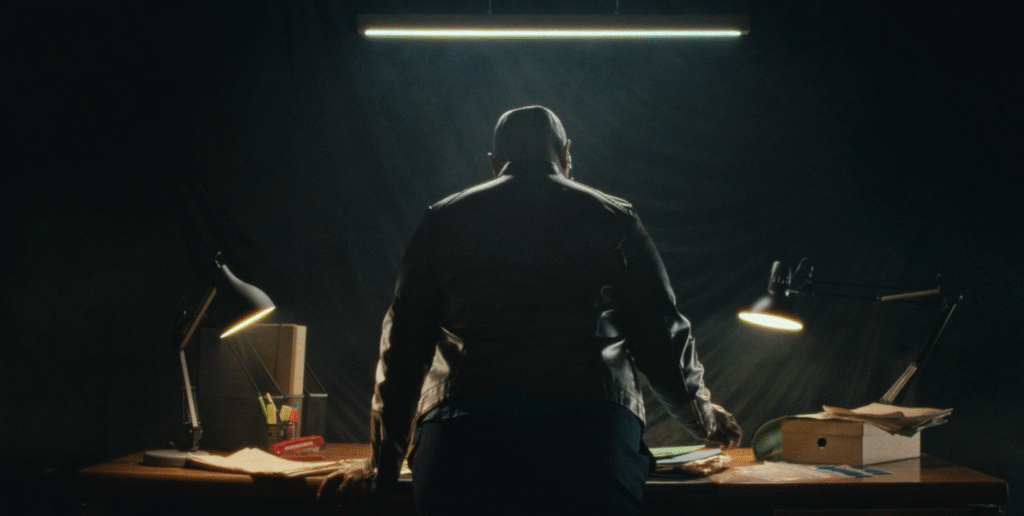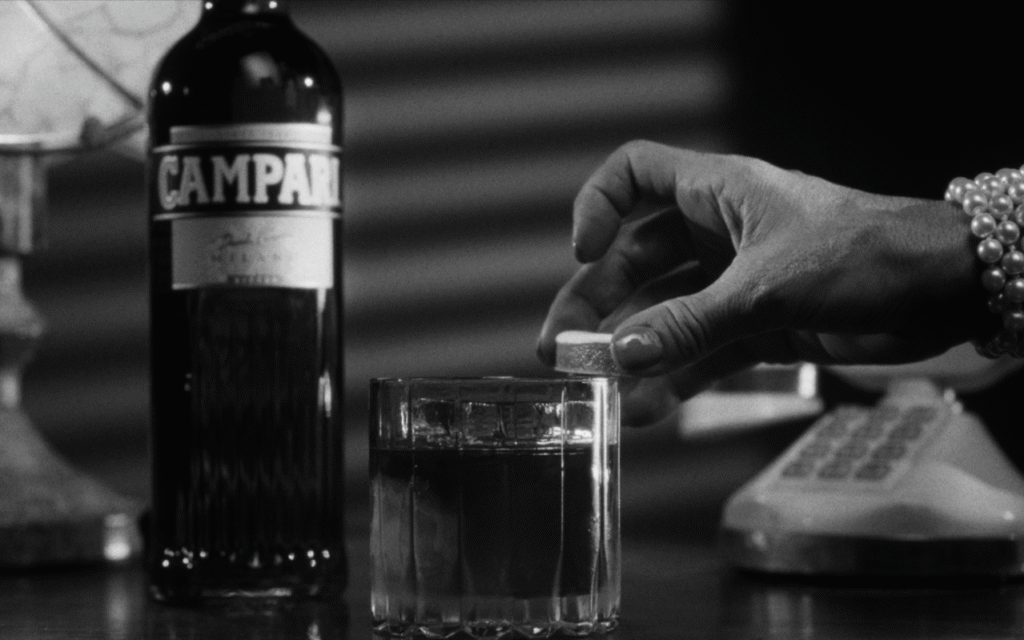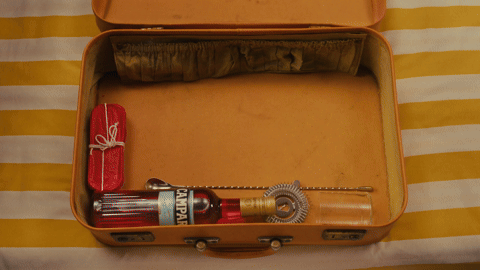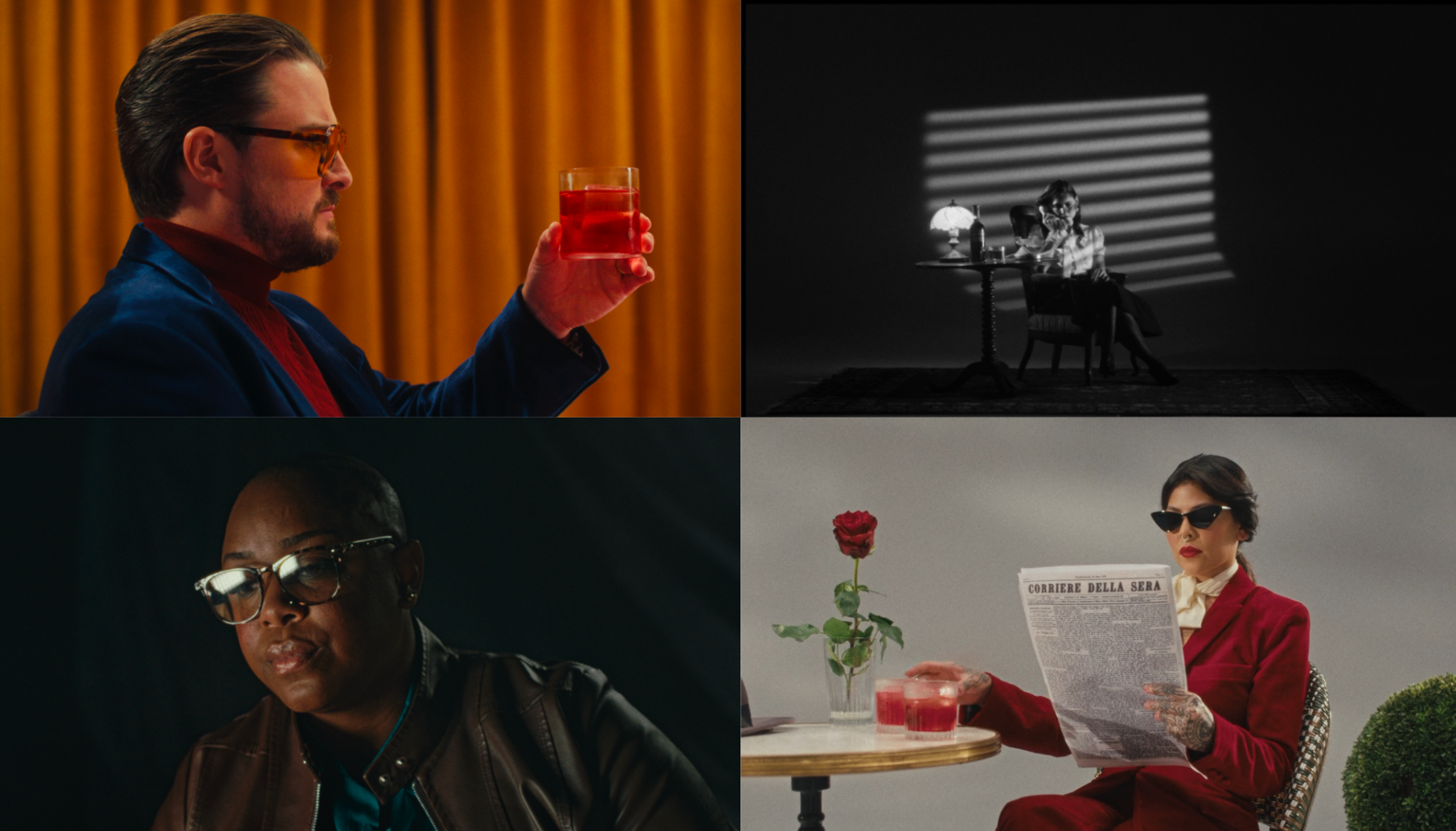In the latest edition of getting down and NERDy we caught up with Sakari Lerkkanen to discuss the filmmaking process of Ode to Cinema for Camapari. A love letter to not only the iconic drink but to the history of cinema, blending many different genres and playing homage to some very iconic filmmakers. Sakari doesn’t just pay homage to the work of other famous directors but provides his own distinct and striking form of storytelling the oozes style and sophistication. Juggling the act of capturing the brand image of Campari, while also capturing the spirit of classic film iconography and then on top of that still applying your own unique stamp is no easy feat. You could say it’s like a creative cocktail, balancing new and old flavours together to make something totally original and refreshing.
When you think of Campari what’s the first thing that comes to mind for you and how did you apply this to the campaign?
Cinema. Cannes Film Festival. The Riviera. Italy. In that order – though only after directing this campaign.
Across all the films, that Italian sensibility was essential, especially in art direction, design and elegance. Campari is an Italian icon. But it became more in focus in the ’60s spy spot. The original script leaned on Western spy tropes (notably James Bond), but we shifted toward Italy’s own “spaghetti spy” tradition. It felt more intriguing, more distinct – and more Campari.
What was the trickiest aspect of shooting this campaign?
Time. Prep was tight. But the script was strong, and we had an exceptional team who instantly connected with it. Everyone brought ideas that enriched the final films and added far more nuance than I initially imagined. I love that kind of collaborative process. It makes the final piece feel so much more layered and alive.

How did you use technology and equipment to capture the visuals of the different genres to make them feel authentic? (e.g. lenses, audio)
The goal was to study and mirror each filmmaking era as authentically as possible.
For example, in the 40s, wide and long lenses were limited. The equipment was heavy. The film stock was less refined than today. We purposefully burned highlights, avoided anything overly polished and kept the audio mono. Our sound team even matched the tonal footprint of the period.

In the 60s, mainstream production value improved, but spaghetti spy films were often low-budget. We leaned into that charm – of course, with elegance in mind. Our editor (an absolute cinephile) also noted how rare match cuts were then, so we adopted a simpler, slightly imperfect rhythm. Later, there was even a brief trend when editors who could do match cuts became a novelty in Hollywood, which feels funny in retrospect.
In the 90s, post-Star Wars, the more expressive, layered sound design became standard (so to speak, modern sound design). In our Se7en-inspired piece, we used that freedom. However, Fincher always emphasises the plot with clarity and purpose. This poignancy was essential – nothing messy. Visually, handheld cameras and most modern lenses were already part of the mainstream grammar by the ’70s onward, so we used them.
Even though Anderson’s films feel nostalgic, he also uses these modern tools. Playful title cards, clean optics, precise framing. Studying Moonrise Kingdom, we also realised that his symmetry is very different to Kubrick’s, and his art direction blends eras rather than being pinned to one (primarily mid-20th century).

When paying homage to other artists or work how do you make sure to create your own personal stamp?
When aiming for an authentic film, there’s always a paradox: everything can’t be perfectly authentic. 40s or 60s film stock would be too aged today, so you rely on modern tools to echo the past. Storytelling is subjective, not objective – visible in every cut you make. Every decision you make.
I am not Fincher or Anderson, but I can embrace what I love in their work and how it makes me feel. In storytelling, that honest, personal feel is something that we all connect with. It’s like speaking to another person. That becomes your signature. In Wes, the curtains and jacket had Lynch vibes, while the plot carried a touch of Kaurismaki. Why hide it? In the noir, Mona had a natural telenovela flair – so we embraced it. And guess who’s the voice on the phone? These decisions all add nuance and texture.
I remember being very happy with the first cuts, but rewatching them again at home, something felt off. Moments that felt funny or exciting earlier weren’t anymore. The spark was missing. The next day, we tore each cut apart and rebuilt the flair. That’s the work – finding the emotional truth.
Ultimately, your style comes from your workflow, the people you collaborate with, and your taste – not from forcing a look. In my early years, I leaned on flashy effects and signature tricks to create a certain “style.” Later, I realised: story comes first. What does it need? How does it connect with people? The sharper the intent, the stronger the resonance.
That learning curve allowed me to translate my vision across multiple film genres and work with vastly different brands worldwide. Now, it is fun to see how some people say my reel has a bold voice, while others highlight its versatility. Both are true. For me, the story and intent always lead – rest follows.
While preparing for the shoot were there any films you watched for inspiration?
For noir: Tension (1949), D.O.A. (1950), Casablanca, The Third Man and The Maltese Falcon.
For the 60s: Audrey Hepburn: Charade, The Spy Who Loved Me, Dr. No, From Russia with Love, Goldfinger, Danger: Diabolik (recommend) and various others.
Wes Anderson’s Moonrise Kingdom and The Grand Budapest Hotel. For the thriller: Se7en, Killer and various others.
Mostly, though, we broke down and analysed the frames, techniques and scenes rather than entire films. Everyone was already familiar with the titles. It was a mix of agency references and my own. (I had to pull these titles from my notes.)
Music also plays such a large part of telling the narrative in each of these films, how was the music brought to life for this?
Each track needed to instantly throw the viewer into the film’s world. First, we aligned on era-specific instruments/styles, then shortlisted five tracks per film – twenty total. The ones that were both instantly recognisable and uplifted the films with a distinct edge made the cut.
The funniest case was the Wes spot. I’d never associate that track with Anderson, but I love surf guitar (I play it too), plus the song’s rhythm elevated the film with a deadpan wink. It made us smile – and it worked.
Need to see more from Sakari then click here 👀
And to find out more about NERD Productions talent click here 👈

